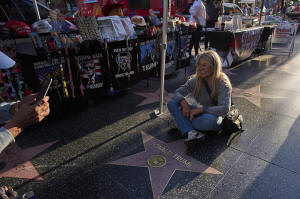A downturn in international travel to the U.S. may last beyond summer,
experts warn
[September 02, 2025] By
RIO YAMAT
LAS VEGAS (AP) — For a few hopeful weeks this summer, a bright billboard
on the major highway linking Toronto to New York greeted Canadian
drivers with a simple message: "Buffalo Loves Canada.”
The marketing campaign, which included a $500 gift card giveaway, was
meant to show Buffalo's northern neighbors they were welcome, wanted and
missed.
At first, it seemed like it might work, said Patrick Kaler, CEO of the
local tourism organization Visit Buffalo Niagara. More than 1,000 people
entered the giveaway. But by the end of July, it was clear the city's
reliable summer wave of Canadian visitors would not arrive this year.
Buffalo’s struggle reflects a broader downturn in international tourism
to the U.S. that travel analysts warn could persist well into the
future. From northern border towns to major hot spots like Las Vegas and
Los Angeles, popular travel destinations reported hosting fewer foreign
visitors this summer.
Experts and some local officials attribute the trend that first emerged
in February to President Donald Trump's return to the White House. They
say his tariffs, immigration crackdown and repeated jabs about the U.S.
acquiring Canada and Greenland alienated travelers from other parts of
the world.
"To see the traffic drop off so significantly, especially because of
rhetoric that can be changed, is so disheartening,” Kaler said.

Forecasts show US losing foreign travelers
The World Travel & Tourism Council projected ahead of Memorial Day that
the U.S. would be the only country among the 184 it studied where
foreign visitor spending would fall in 2025. The finding was “a clear
indicator that the global appeal of the U.S. is slipping,” the global
industry association said.
“The world’s biggest travel and tourism economy is heading in the wrong
direction,” Julia Simpson, the council’s president and CEO, said. "While
other nations are rolling out the welcome mat, the U.S. government is
putting up the ‘closed’ sign.”
Travel research firm Tourism Economics, meanwhile, predicted this month
that the U.S. would see 8.2% fewer international arrivals in 2025, an
improvement from its earlier forecast of a 9.4% decline but well below
the numbers of foreign visitors to the country before the COVID-19
pandemic.
“The sentiment drag has proven to be severe,” the firm said, noting that
airline bookings indicate “the sharp inbound travel slowdown” of May,
June and July would likely persist in the months ahead.
Deborah Friedland, managing director at the financial services firm
Eisner Advisory Group, said he U.S. travel industry faced multiple
headwinds — rising travel costs, political uncertainty and ongoing
geopolitical tensions.
Since returning to office, Trump has doubled down on some of the
hard-line policies that defined his first term, reviving a travel ban
targeting mainly African and Middle Eastern countries, tightening rules
around visa approvals and ramping up mass immigration raids. At the same
time, the push for tariffs on foreign goods that quickly became a
defining feature of his second term gave some citizens elsewhere a sense
they were unwanted.
“Perception is reality,” Friedland said.
International arrivals down from Western Europe, Asia and Africa
Organizers of an international swing dancing said an impression of
America's hostility to foreigners led them to postpone the event, which
had been scheduled to take place this month in the Harlem area of New
York City.

About three months into Trump’s second term, international competitors
began pulling out of the world finals of the International Lindy Hop
Championships, saying they felt unwelcome, event co-producer Tena
Morales said. About half of attendees each year come from outside the
U.S., primarily from Canada and France, she said.
Contest organizers are considering whether to host the annual
competition in another country until Trump's presidency ends, Morales
said.
[to top of second column] |

Silvia Camino, visiting from Argentina, takes photos with the Donald
Trump star on the Hollywood Walk of Fame in Los Angeles, Friday,
April 4, 2025. (AP Photo/Jae C. Hong, File)
 “The climate is still the same and
what we're hearing is still the same, that (dancers) don't want to
come here," she said.
The nation’s capital, where the Trump administration in recent weeks
deployed National Guard members and took over management of Union
Station, also has noticed an impact.
Local tourism officials have projected a 5.1% dip in international
visitors for the year. Marketing organization Destination DC said
last week it planned to “counter negative rhetoric" about the city
with a campaign that would feature residents and highlight the “more
personal side” of Washington.
U.S. government data confirms an overall drop-off in international
arrivals during the first seven months of the year. The number of
overseas visitors, a category that doesn't include travelers from
Mexico or Canada, declined by more than 3 million, or 1.6%, compared
to the same period a year earlier, according to preliminary figures
from the National Travel and Tourism Office.
As a tourist generator, Western Europe was down 2.3%, with visitors
from Denmark dropping by 19%, from Germany by 10%, and from France
by 6.6%. A similar pattern surfaced in Asia, where the U.S. data
showed double-digit decreases in arrivals from Hong Kong, Indonesia
and the Philippines. Fewer residents of countries throughout Africa
also had traveled to the U.S. as of July.
However, visitors from some countries, among them Argentina, Brazil,
Italy and Japan, have arrived in greater numbers.
Filling a void left by Canadian tourists
Neither did all U.S. destinations report sluggish summers for
tourism.
On eastern Wisconsin’s Door Peninsula, which straddles Lake Michigan
and Green Bay, a steady stream of loyal Midwest visitors helped
deliver a strong summer for local businesses, according to Jon
Jarosh, a spokesperson for Destination Door County.

Many business owners reported a noticeable uptick in foot traffic
after a quieter start to the season, Jarosh said, and sidewalks were
bustling and restaurants were packed by midsummer.
Executives from the major U.S. airlines said last month that
American passengers booking premium airfares helped fill their
international flights and that demand for domestic flights was
picking up after a weaker than expected showing in the first half of
2025.
The Federal Aviation Administration said it was gearing up for what
is expected to be the busiest Labor Day weekend in 15 years.
Bookings for U.S. airlines were up about 2% compared to 2024 for the
long holiday weekend that started Thursday, aviation analytics firm
Cirium said.
As the summer winds down, though, the absence of foreign visitors in
Buffalo was still visible, according to Kaler, the head of Visit
Buffalo Niagara.
Canada sent over 20.2 million visitors to the U.S. last year, more
than any other country, U.S. government data showed. But this year,
residents of Canada have been among the most reluctant to visit.
In a major U-turn, more U.S. residents drove into Canada in June and
July than Canadians making the reverse trip, according to Canada’s
national statistical agency. Statistics Canada said it was the first
time that happened in nearly two decades with the exception of two
months during the pandemic.
In July alone, the number of Canadian residents returning from the
U.S. by car was down 37% from the year before, and return trips by
plane fell 26%, the agency said.
As a result, Visit Buffalo Niagara shifted its marketing efforts
this summer to cities like Boston, Philadelphia and Chicago. Amateur
children’s sporting events also helped fill the void left by
Canadian tourists.
“We will always welcome Canadians back when the time is right,”
Kaler said. “I don’t want Canadians to feel like we see them as just
dollar signs or a transaction at our cash registers. They mean more
to us that that."
All contents © copyright 2025 Associated Press. All rights reserved |